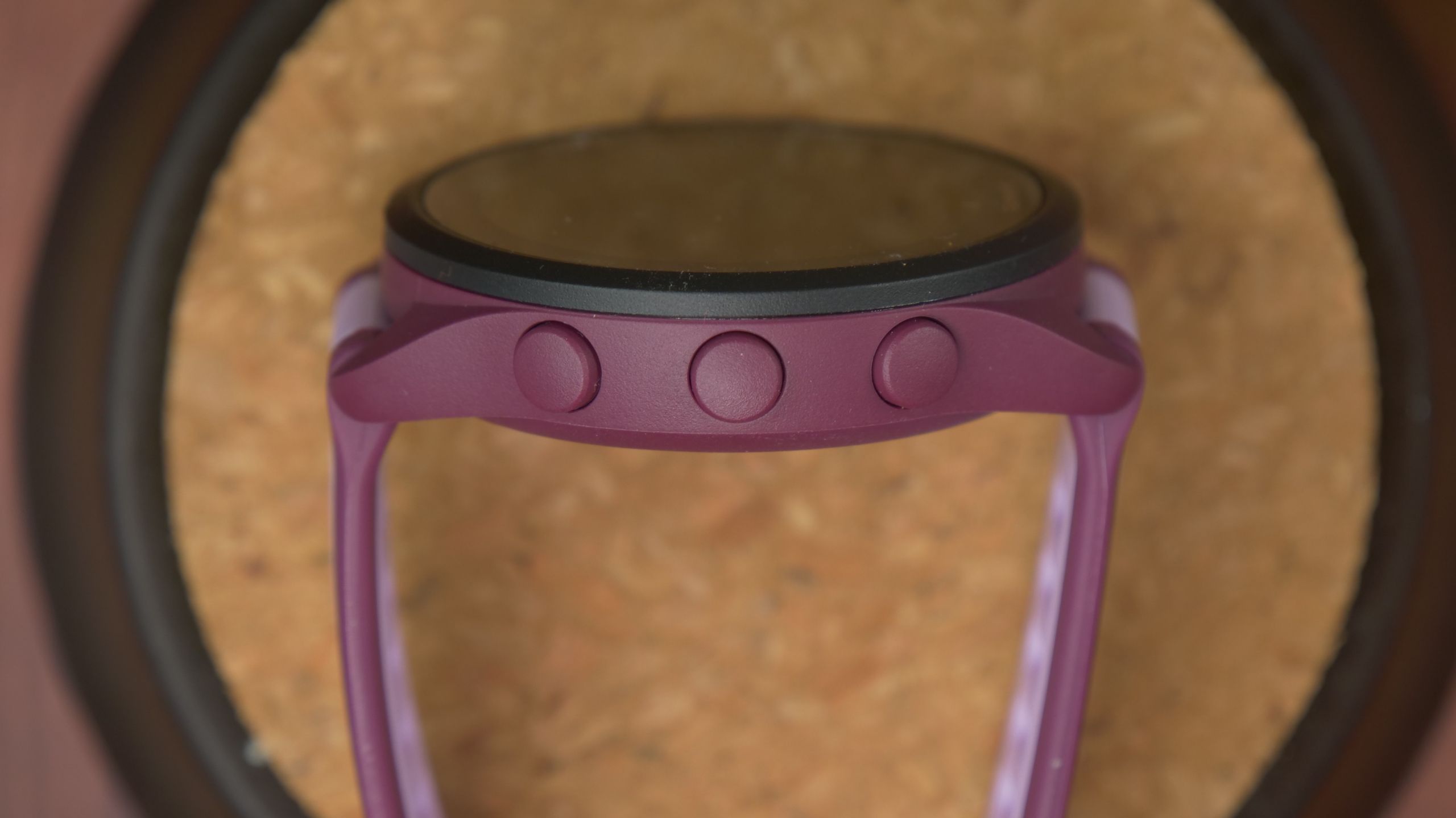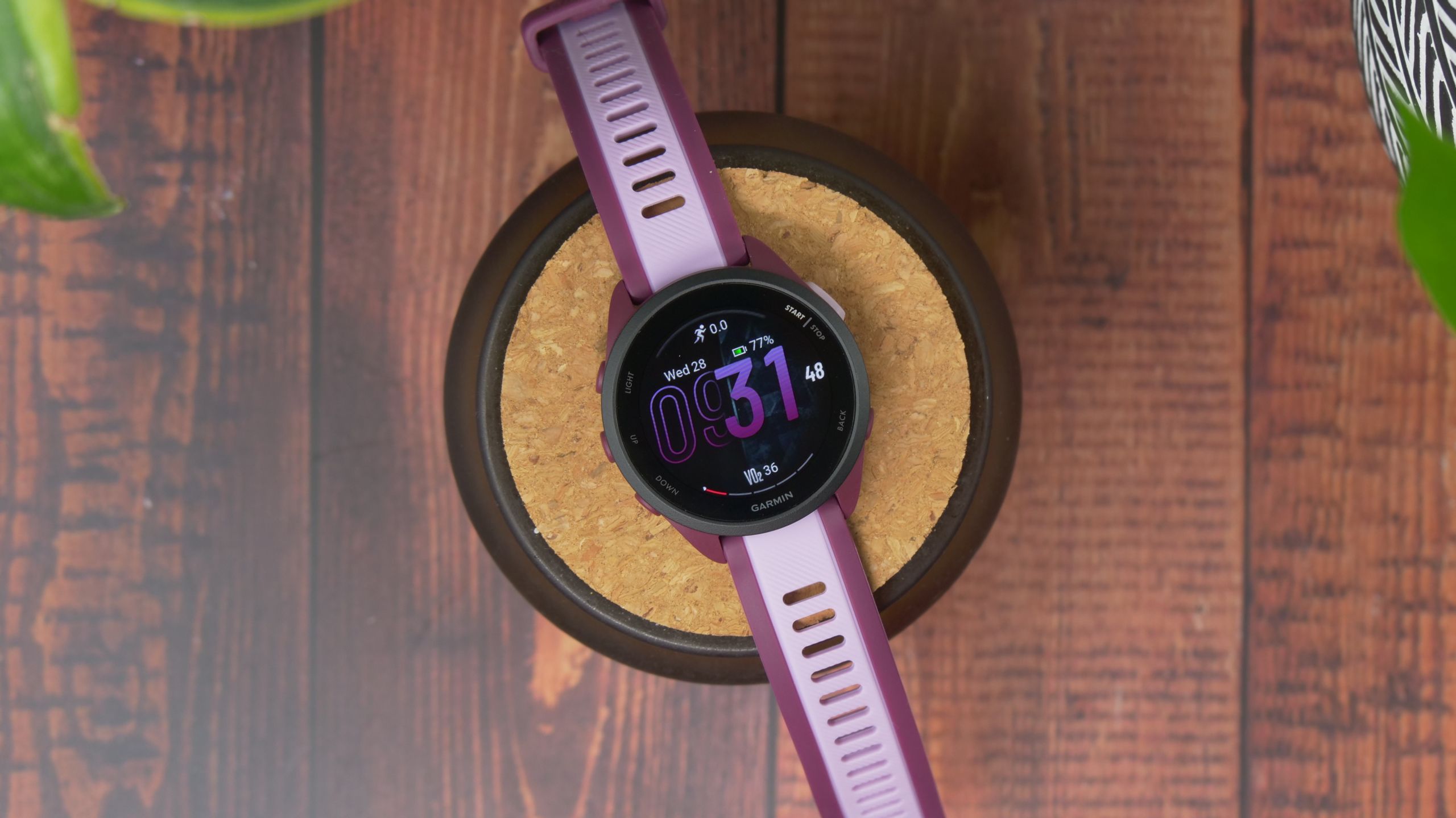Garmin added a new, budget-friendly AMOLED-equipped watch to its Forerunner range. This is the Forerunner 165, which costs around $250 in the US, or £250 in the UK. Technically, this particular model is the Music version, which costs about $50 or £40 more, but either way, it’s cheaper than the Forerunner 265 models, and more expensive than the entry-level Forerunner 55. For the money, it’s actually brilliant.
Best Garmin watches: Expert tested and reviewed
We’ve put the best Garmin watches through their paces and have found the top ones you need for any exercise routine.
Sure, it misses some of the features from the 265, and other more expensive models like the Epix and Fenix range, but if you’re after an excellent running and fitness watch, and don’t want to spend a lot of money, it’s got a good balance of features and performance.
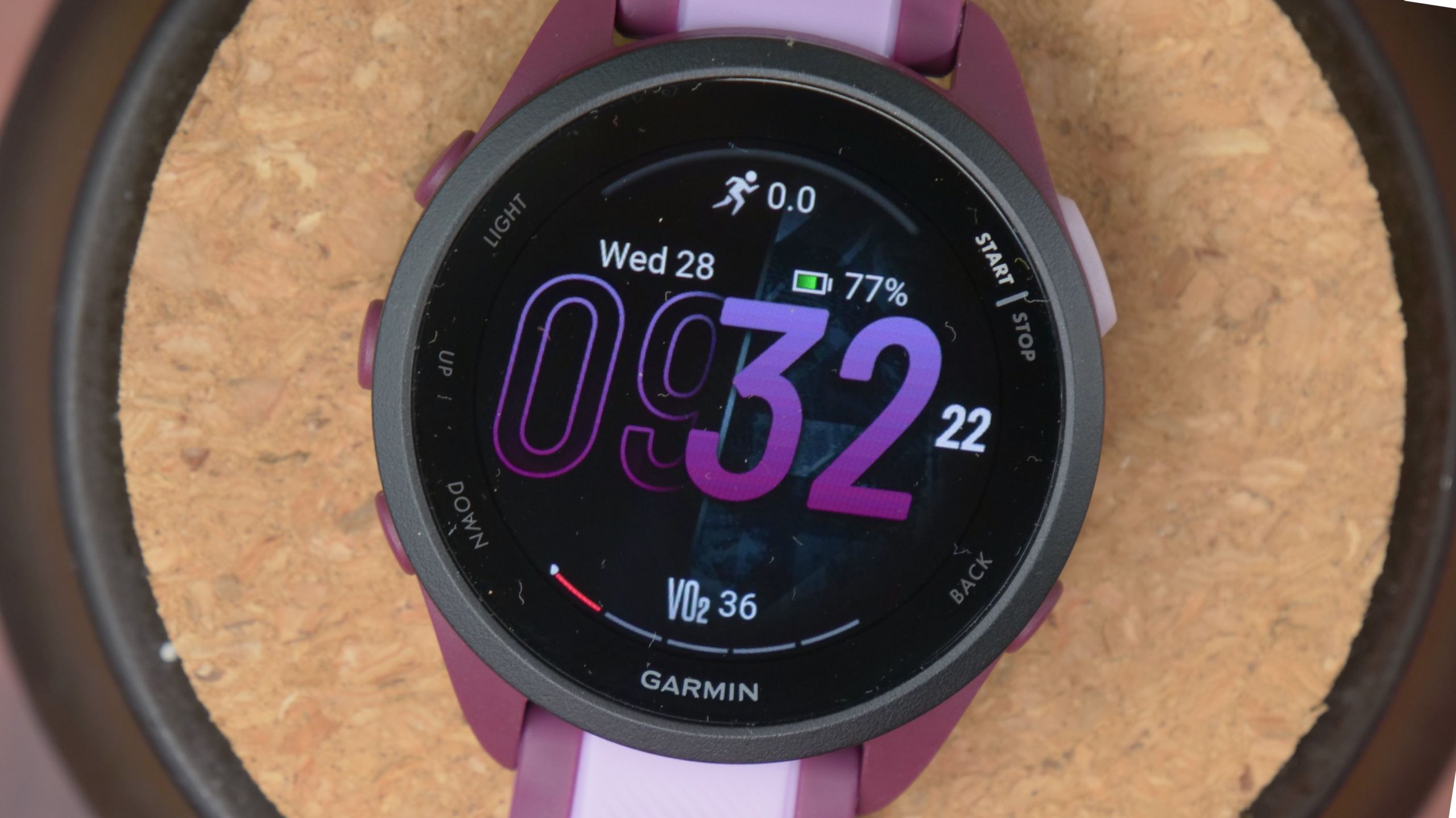
Garmin Forerunner 165
Recommended
The Garmin Forerunner 165 is great running-focused smartwatch for those on a budget. The inclusion of an AMOLED display makes a significant difference to the user experience. You also get most of Garmin’s best features, including its excellent Body Battery tool, without paying for a top-tier model. Outside of maybe triathletes, few will find the 165 wanting.
- Vibrant AMOLED display
- Reliable GPS and heart rate tracking
- 11-day battery life
- Finicky charging
- Music model costs more
Price, specs, and availability
The Garmin Forerunner 165 is available to buy now from Garmin’s website for $250. The company also offers a separate Music model that retails for $300.
Garmin Forerunner 165
- Battery Life
- 11 days, 19 hours of GPS workouts
- Offline Media Storage
- 4GB
- Weather
- Yes
- Smartphone Music Control
- Yes
- Display
- AMOLED screen, 390 x 390 pixels
- Connectivity
- View/respond to notifications and messages
- Health sensors
- Heart rate, pulse ox
- Weight
- 39g
- Audio
- Via Bluetooth
- Mobile payments
- Garmin Pay
- Workout detection
- Vertical oscillation and ratio, ground contact time, stride length, running power, cadence, PacerPro strategies, race predictor
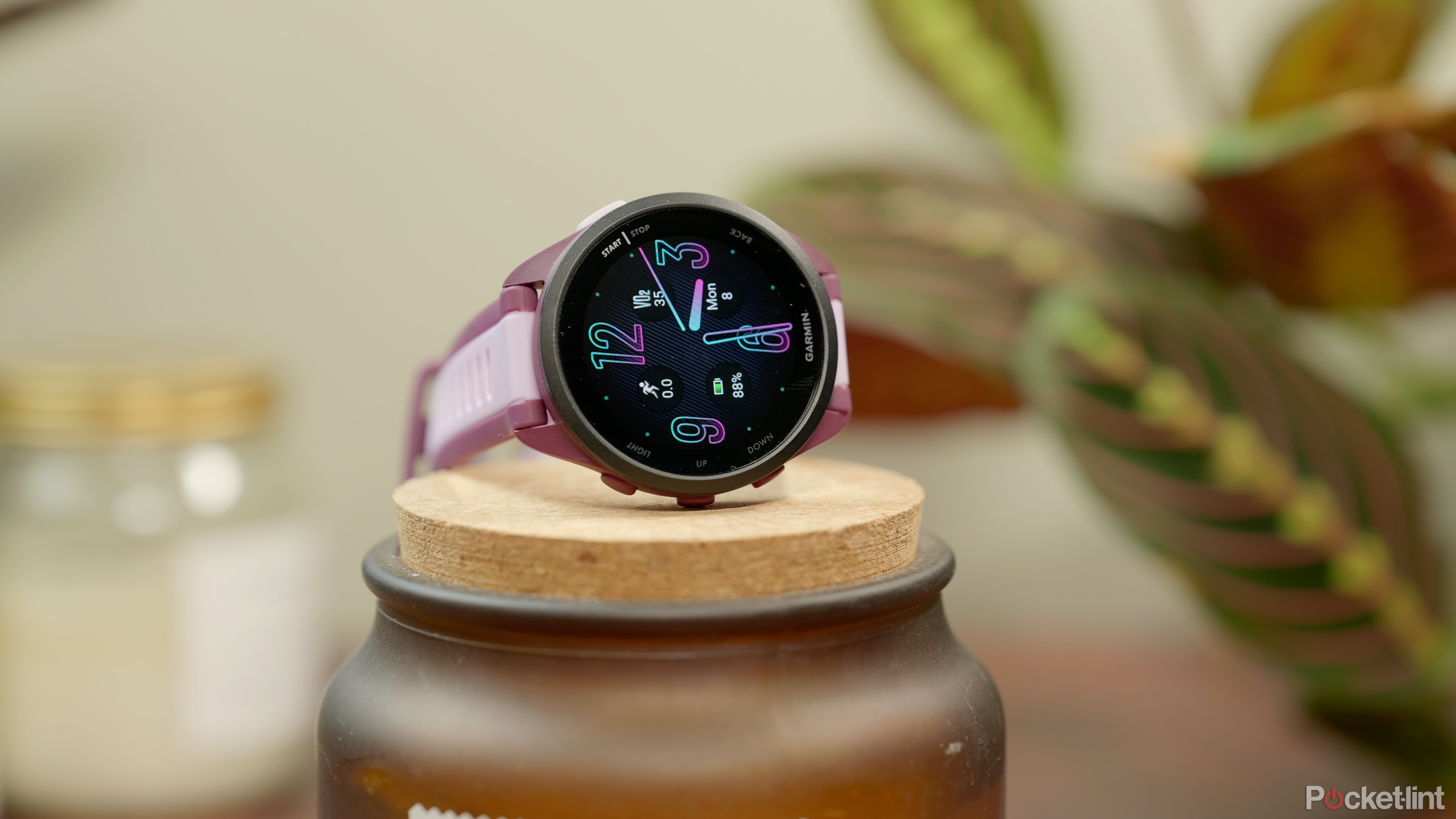 Design and display style
Design and display style
The AMOLED advantage
Like all the other Forerunner models, the 165 is designed to be a lightweight, sporty watch. So its material choices are all picked with comfort in mind. When you’re running, or working out, it can be distracting and uncomfortable to wear a chunky, heavy watch.
This is very stripped back, built from lightweight materials, and very easy to wear all day and all night, and you barely notice it’s there at all during an activity. Its lightness is complemented by its sleek profile, so it’s very easy to ignore. And it is one of the few watches I can wear all night, every night, to track my sleep without really being aware of it.
This is very stripped back, built from lightweight materials, and very easy to wear all day and all night, and you barely notice it’s there at all during an activity. Its lightness is complemented by its sleek profile, so it’s very easy to ignore.
One way Garmin cut down on costs was to use hardened glass rather than a more durable sapphire, or gorilla glass, so anyone who often finds themselves bouldering, or banging their watch against random objects, rocks, or anything may want to look at a more premium and durable model. Still, it’s water-resistant to high levels and rated up to 5ATM (or 50 meters in freshwater).
One of the things I love about the Forerunner 165 — like the Epix and Fenix models — is that you can control the entire interface using the physical buttons dotted around the case. Yes, it has a touchscreen you can tap and swipe on too, but there’s something that feels more natural and intuitive about using a button system.
I don’t know how many times I’ve accidentally swiped away from screens or paused workouts with some other watches.
You get that instant feedback from the click of the button that you’ve actioned something. Not to mention the fact that when you’re running, it’s much easier to press buttons you can feel than trying to precisely tap or swipe your finger on a screen.
Garmin knows this is a preference in exercise too, and knows that often having a touchscreen as the primary control method can be problematic in different workouts if the display isn’t locked. I don’t know how many times I’ve accidentally swiped away from screens or paused workouts with some other watches. And so, when you start a workout, the touchscreen is disabled by default. You can switch this setting off if you really want to though.
Yes, it has a touchscreen you can tap and swipe on too, but there’s something that feels more natural and intuitive about using a button system.
Plus, the bezel around the watch display has labels on it, like a classic sports watch, telling you the core functions of those buttons, so it’s really easy to pick up. And it is really easy to start an activity. Just click the ‘Start’ button, choose your workout, and press it again to start.
Slowly but surely, Garmin is transitioning away from its old transflective memory-in-pixel displays. They had their benefits — mostly around battery life. They can display time and information without using much battery at all. In fact, with the backlight off and no moving animation, it didn’t use any, instead using the ambient light around you, reflecting on the screen.
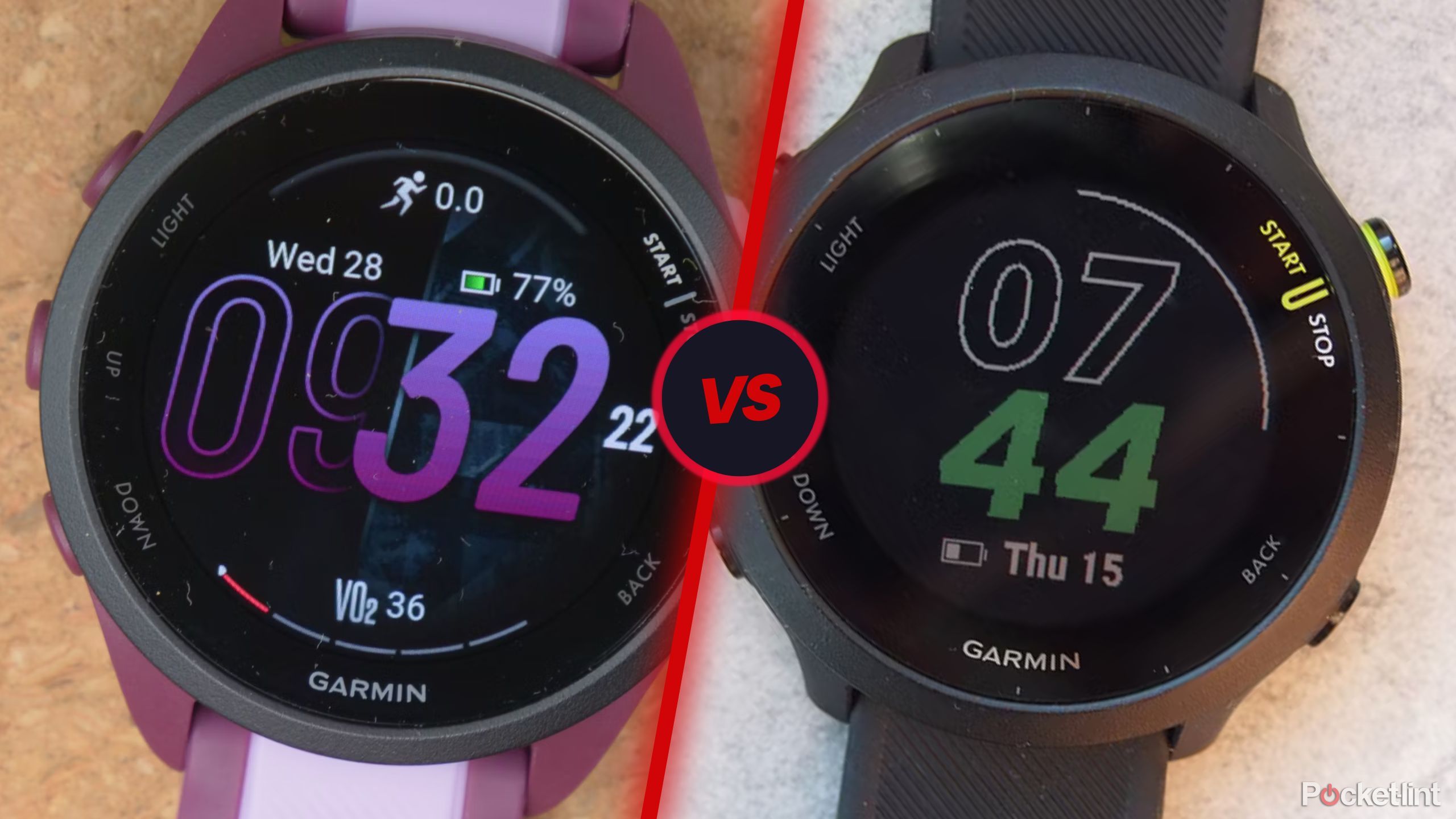
Garmin Forerunner 165 vs. Forerunner 55: Does an OLED screen make a difference?
With a modern display, additional running features, and better battery, is the Forerunner 165 worth the extra $50?
However, now that AMOLED displays have become a lot more battery efficient, brighter, more detailed and more color-rich, there’s no real competition. You can’t have the display on all the time without significantly decreasing your battery life, but when it is on, it’s far easier to read, and more colourful and has smoother animation. Customers prefer it, so Garmin is rolling it across virtually all models of its devices.
Because it’s AMOLED, however, it uses a lot more battery juice to display any data. So, by default, the display is set to only come on when you raise your wrist to look at the time — like most modern smartwatches. You can have it always display the time with a low-energy always-on function, but this cuts battery life down from about 11 days to just four days, and isn’t worth it in my opinion. The lift-to-wake function works well, so whenever I need to see the time, I just raise my arm, and the screen lights up.
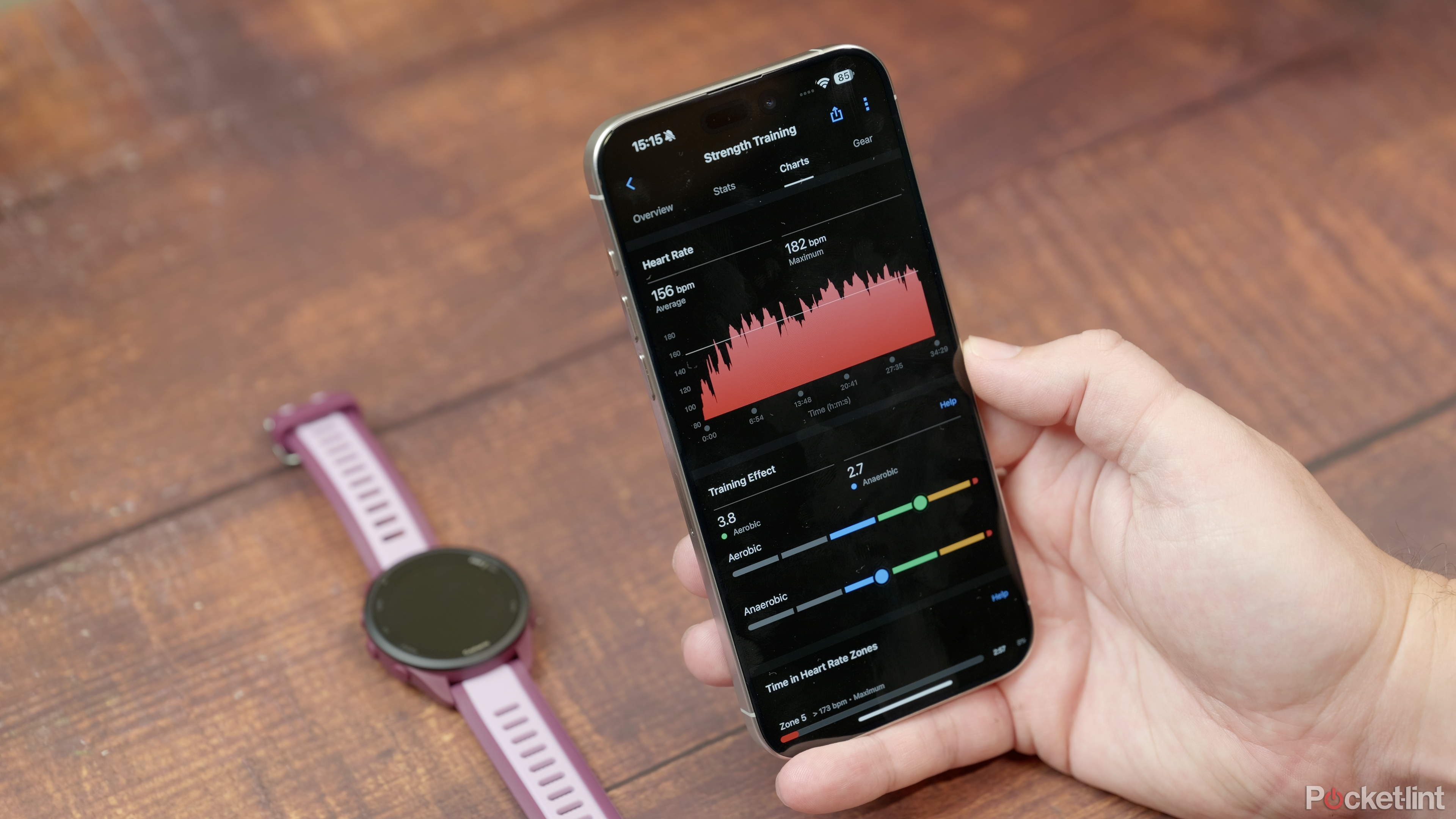 Software functions and usability
Software functions and usability
Limited lifestyle features
Being a running watch first and foremost, the software experience is geared towards runners. So, when you first press the activity button, the first three preloaded activities to choose from are the outdoor run, track run and treadmill run. However, it’s a Garmin watch, and so it comes with a lot more activities you can add to that shortlist. Just like the other models, you can add things like walking, hiking, strength, cardio, yoga and a whole load more.
Lifestyle features are a little limited compared to watchOS or Wear OS devices, but you can add your own offline music if you’re a Spotify, Amazon Music or Deezer subscriber, plus Garmin Pay lets you use contactless payments on your wrist — as long as you’re with one of the few banks that actually supports Garmin’s protocol.
The glance widgets continue to be a useful way to get snippets of relevant information without having to do lots of swiping across the screen. Glance at weather, calendar events, your battery status, last workouts, and much more. And you can organize them to your liking, removing what you don’t need, adding what you want, and reordering them.
Lifestyle features are a little limited compared to watchOS or Wear OS devices, but you can add your own offline music if you’re a Spotify, Amazon Music or Deezer subscriber, plus Garmin Pay lets you use contactless payments on your wrist — as long as you’re with one of the few banks that actually supports Garmin’s protocol. You get smartphone notifications, but not much interactivity for replying — unless you’re using the watch with an Android phone. If you’re an Android user, you can also view images from notifications on your wrist. Apple users don’t get that option.
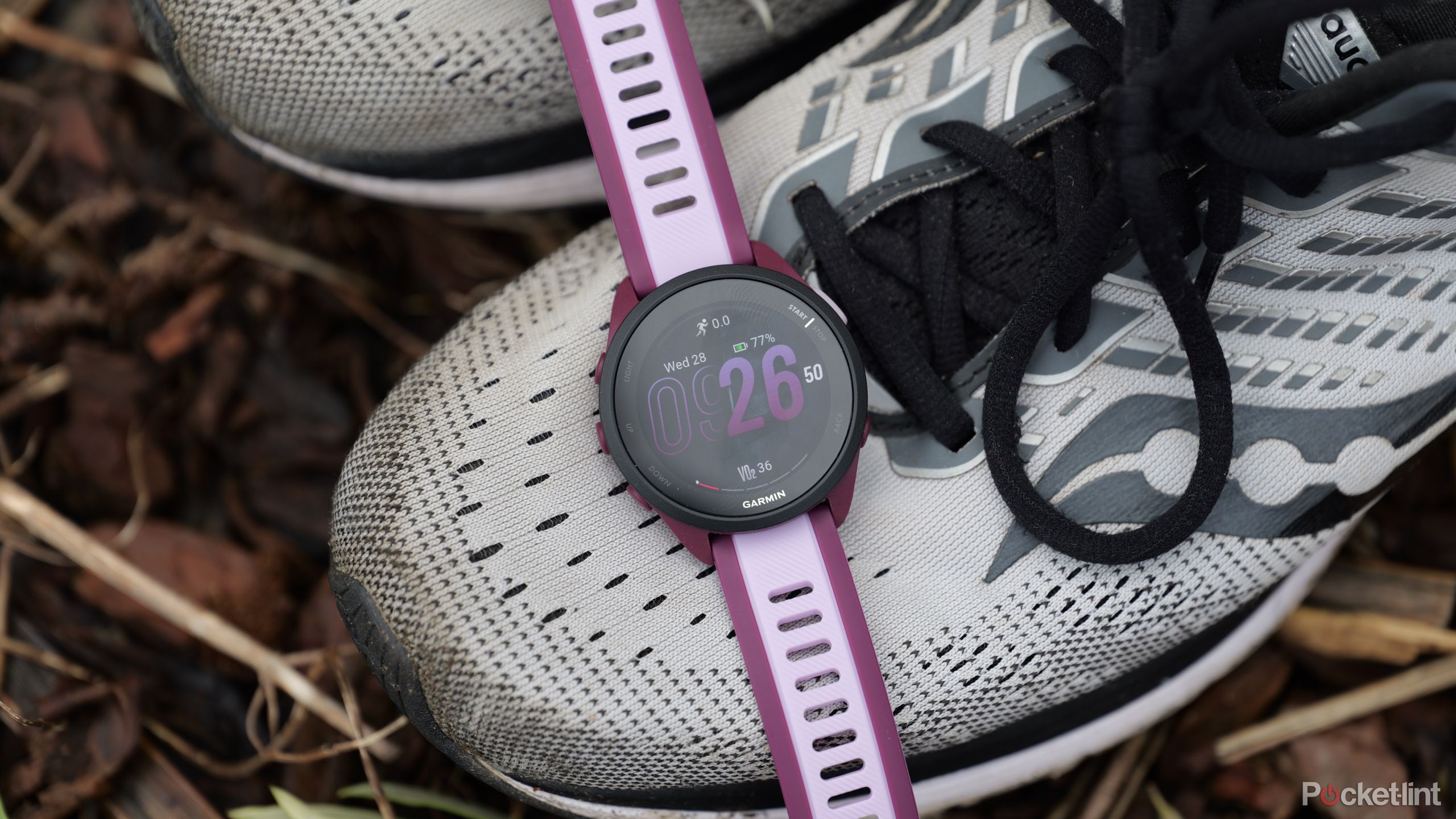 Fitness tracking performance
Fitness tracking performance
Most of what you will need
Moving on to talk about the fitness and health experience, and Garmin yet again shows its strengths with the Forerunner 165, and shows why it’s so highly rated by consumers.
It’s worth noting here that it is missing some of the features the more expensive watches have. For instance, there’s no Training Readiness, Training Load or multi-band GPS. The Forerunner 265 has all of those and more. But then again, that model costs considerably more.

Garmin Forerunner 165 vs Forerunner 265: Can the new entry-level model compete?
Garmin’s latest entry-level Forerunner watch boasts an OLED screen, but does it have enough features for serious runners?
The Forerunner 165 does, however, have all the most crucial tracking abilities and displays them in useful ways. There’s Body Battery, which can tell you how much juice you’ve got left in the tank based on your activity and sleep. You can also make use of the training suggestions, which use your current fitness, activity and recovery status to suggest a run to go on.
In fact, you can launch right into that from the run workout screen. Despite the fact it hasn’t got multi-band support, the GPS tracking is actually very accurate. I don’t live in an urban area, so I wasn’t able to test the features surrounded by lots of tall buildings, but it did a good job of tracking the routes I was taking under tree cover, reliably sticking to roads and paths, rarely cutting corners or sticking me on the wrong side of the road.
Similarly, the heart-rate sensor has been accurate enough, even while doing kettlebell workouts, which can be a bit of a struggle for a lot of wearables, due to the way the users’ arms and wrists move during those types of workouts. I have no complaints at all. You might get more responsive tracking, and more precision in GPS performance in more expensive watches, but this has been really reliable and consistent the whole time I’ve tested it.
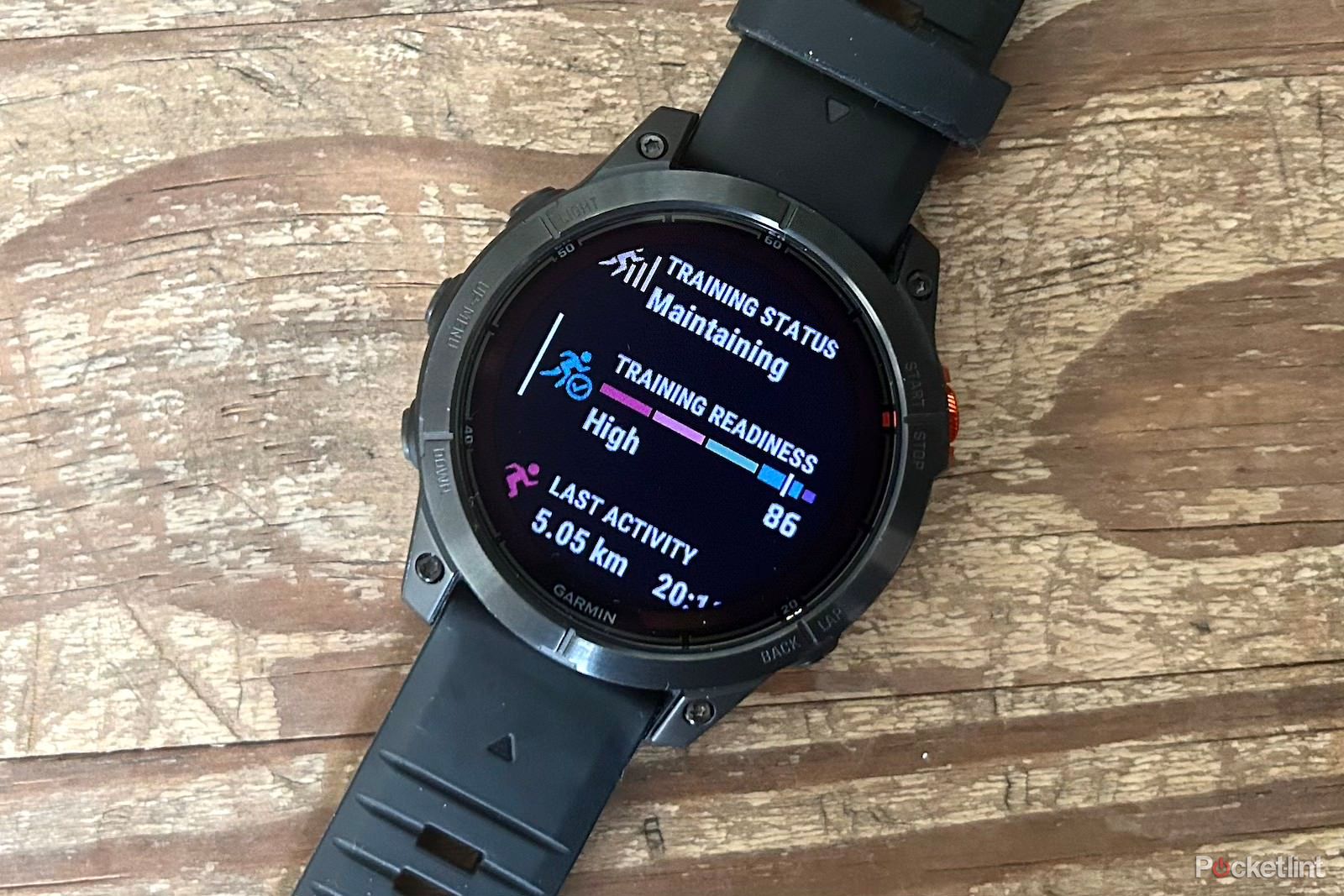
What is Garmin Body Battery and how does it work? Decoding your score
Body Battery is one of Garmin’s best features – find out all about it here, including how it works and what exactly your score means.
I also like how Garmin contextualizes the data and updates the sleep coach, recover and body battery based on how much activity I’ve done and how strenuous it was. At the end of the day, it flashes a notification on screen saying if you’ve had an easy day, or an active day, and then giving suggestions for rest or activity. On an easy day, it might suggest ending the day with yoga or meditation. After an active day it might suggest getting more sleep than usual.
It’s not just data, it uses the data to tell you how long you need to recover, what run to do next or how much sleep you need.
Similarly, if you’ve had a bad night of sleep, the sleep coach data on the watch’s widgets will update to add the suggestion that you should get more sleep. I really like how Garmin ties all of this together and displays it in ways that are relatable. It’s not just data, it uses the data to tell you how long you need to recover, what run to do next or how much sleep you need.
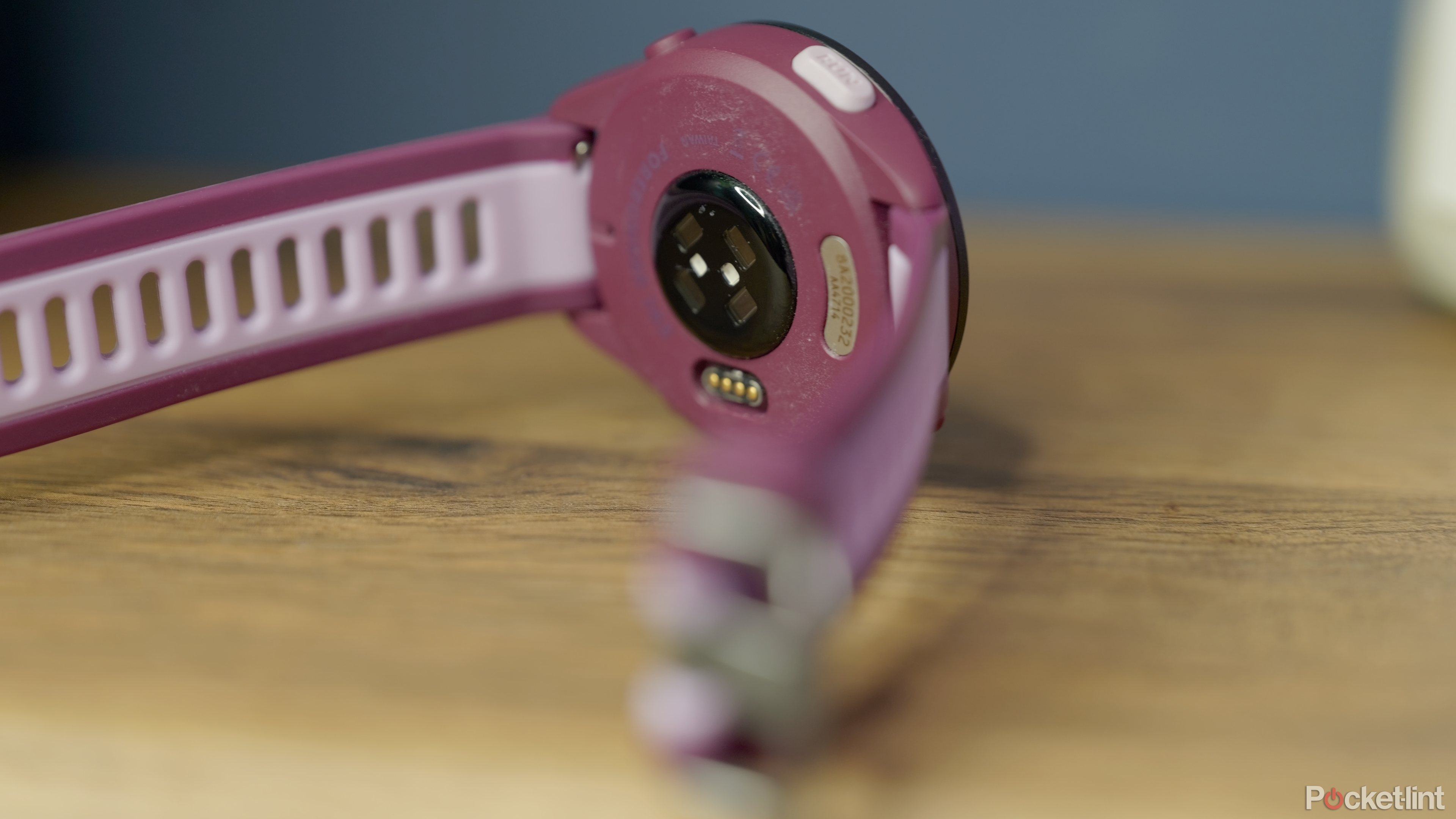 Battery life and charging
Battery life and charging
Some charging annoyances
I’ve briefly hinted at battery life already, but it’s one reason to pick any Garmin watch over the likes of an Apple Watch, Samsung Galaxy Watch or Pixel Watch. By Garmin’s standards, the 11-day battery isn’t quite up to the best of them, but it does mean you can comfortably get through a full week of wearing it, tracking regular activities, and wearing it all night for sleep tracking before needing to plug it in to its proprietary cable for charging.
This charging cable continues to be a bit of an annoyance in my view. It’s barely changed in years, and I’ve often found the connection to be a little fiddly.
This charging cable continues to be a bit of an annoyance in my view. It’s barely changed in years, and I’ve often found the connection to be a little fiddly. What’s more, it means — if you do need to charge it — you can’t just use a universal wireless charger, or any other cable, except the one that comes with the Garmin watch. And it’s a pretty small, short cable, that — because it doesn’t get used all that frequently — can easily get lost.
If Garmin switched to a universal, magnetic wireless charging system at some point, I’d be delighted, but I’m happy to put up with this fiddly, annoying cable if it means getting access to the long battery life and health features on offer from Garmin.
Battery life is similarly strong when using it for GPS activities too. I wasn’t able to test it to its full extent — because it can go up to 19 hours using GPS to track an individual’s activity. However, it was capable of handling the four-hour walk I mentioned earlier comfortably, and I had no worry that it would die even though I started the session with just over 30% battery. With all the navigation systems enabled, which uses more battery than GPS only, I finished with around 10% left.
Verdict: Is the Garmin Forerunner 165 worth it?
In the end, it’s hard to come away from testing the mid-range Forerunner anything but impressed. For the money, you get a long-lasting, waterproof watch with lots of great fitness and lifestyle features, plus accurate heart-rate and location data.
It’s missing some of the more high-end fitness and training features and capabilities, but it’s got all the core stuff absolutely right.
Trending Products

Cooler Master MasterBox Q300L Micro-ATX Tower with Magnetic Design Dust Filter, Transparent Acrylic Side Panel…

ASUS TUF Gaming GT301 ZAKU II Edition ATX mid-Tower Compact case with Tempered Glass Side Panel, Honeycomb Front Panel…

ASUS TUF Gaming GT501 Mid-Tower Computer Case for up to EATX Motherboards with USB 3.0 Front Panel Cases GT501/GRY/WITH…

be quiet! Pure Base 500DX Black, Mid Tower ATX case, ARGB, 3 pre-installed Pure Wings 2, BGW37, tempered glass window

ASUS ROG Strix Helios GX601 White Edition RGB Mid-Tower Computer Case for ATX/EATX Motherboards with tempered glass…


